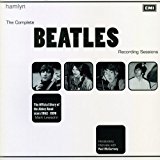- Album Songs recorded during this session officially appear on the Abbey Road LP.
- Studio:
- EMI Studios, Studio Two, Abbey Road
- Studio:
- EMI Studios, Studio Three, Abbey Road
Timeline
More from year 1969
Spread the love! If you like what you are seeing, share it on social networks and let others know about The Paul McCartney Project.
About
At 10 am, The Beatles gathered at EMI Studios to walk across the zebra crossing on Abbey Road. The photographs taken on this day would become the sleeve of the “Abbey Road” album.
It was too early to go to the recording studio once the shooting was over. To kill time, Paul McCartney brought John Lennon to his Cavendish Avenue home, George Harrison went to the nearby London Zoo with Mal Evans and Ringo Starr went shopping.
They were back at EMI Studios at 2:30 pm to continue the recording of the album.
The basic track of “The End” had been recorded on July 23 and some overdubs had been added on August 5 and 7. On this day, Paul added bass and Ringo some drums to the closing section of the track. The next overdubs would be added on August 15, 1969.
John’s “I Want You (She’s So Heavy)” had not been touched since April 20, 1969. On this day, John used George’s Moog synthesizer installed in Room 43 of EMI Studios, to add some white noise towards the end of the track.
Later that day, we continued the work at hand, with Paul and Ringo overdubbing guitar and tambourine on “Oh Darling” while George set up the Moog synthesizer at John’s request and twiddled the knobs as the great behemoth spit out white noise, tacked onto the end of “I Want You (She’s So Heavy).” We ended the session fairly early.
Geoff Emerick – From “Here, There and Everywhere: My Life Recording the Music of The Beatles“, 2006
It’s pretty heavy at the ending, you know, because we used the Moog synthesizers on it, and the range of the sound is from minus whatever to way over…Well, you can’t hear it. That instrument, the Moog synthesizer, can do all the sounds, you know, all ranges of sounds, and we did that on the end. If you’re a dog, you can hear a lot more.
John Lennon – 1969 interview – Quoted in beatlesebooks.com
Strangely, this white noise, as well as some drums by Ringo, were added onto the master done at Trident Studios on February 23, without the overdubs recorded on April 20, 1969. The released version was an edit of the two mixes. This editing, as well as some last overdubs, would be done on August 11. This session ended at 9 pm.
While John, George and Ringo were working on “I Want You (She’s So Heavy)“, Paul was alone in Studio Three to overdub some lead guitar and tambourine onto “Oh! Darling“.
Ryan and Kehew note that the guitar and tambourine superimposition recorded for Oh! Darling in this session were not used in the final remix of the song, however, audio evidence indicates that the guitar does make an appearance at the very opening chord of the song.
From “The Beatles Recording Reference Manual – Volume 5” by Jerry Hammack
The last overdubs would also be done on August 11. This session ended at 9:45 pm.
Last updated on December 27, 2021
Songs recorded
2.
Recording • SI onto unnumbered Trident master
3.
Staff
Musicians on "The End"
- Paul McCartney:
- Bass
- Ringo Starr:
- Drums
Musicians on "Oh! Darling"
- Paul McCartney:
- Lead guitar, Tambourine
Musicians on "I Want You (She's So Heavy)"
- Ringo Starr:
- Drums
- John Lennon:
- Moog synthesizer
Production staff
- George Martin:
- Producer
- Geoff Emerick:
- Engineer
- Tony Clark:
- Engineer
- Phil McDonald:
- Engineer
- John Kurlander:
- Second Engineer
- Alan Parsons:
- Second engineer
Going further
The Complete Beatles Recording Sessions • Mark Lewisohn
The definitive guide for every Beatles recording sessions from 1962 to 1970.
We owe a lot to Mark Lewisohn for the creation of those session pages, but you really have to buy this book to get all the details - the number of takes for each song, who contributed what, a description of the context and how each session went, various photographies... And an introductory interview with Paul McCartney!
If we like to think, in all modesty, that the Paul McCartney Project is the best online ressource for everything Paul McCartney, The Beatles Bible is for sure the definitive online site focused on the Beatles. There are obviously some overlap in terms of content between the two sites, but also some major differences in terms of approach.



Contribute!
Have you spotted an error on the page? Do you want to suggest new content? Or do you simply want to leave a comment ? Please use the form below!